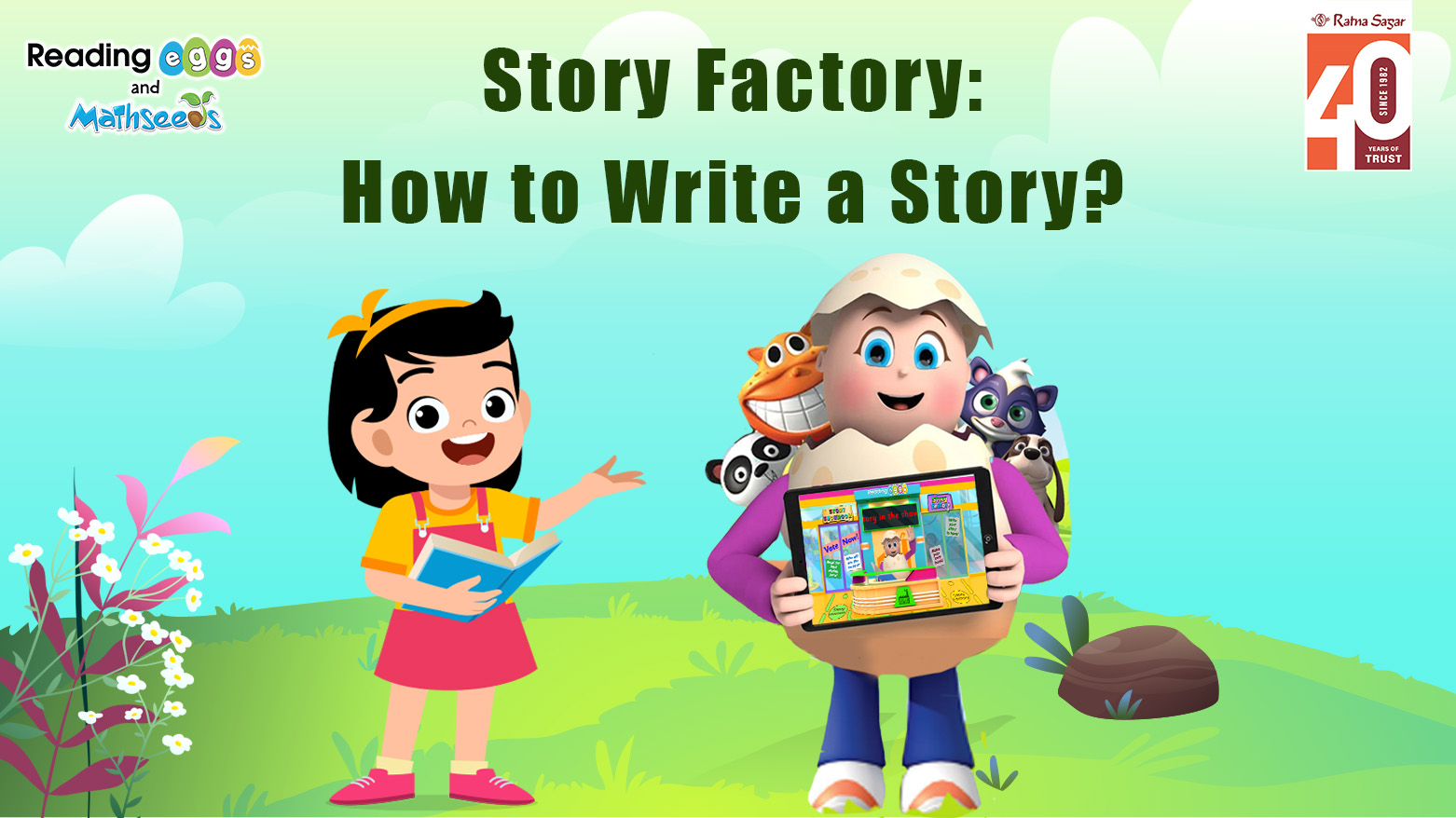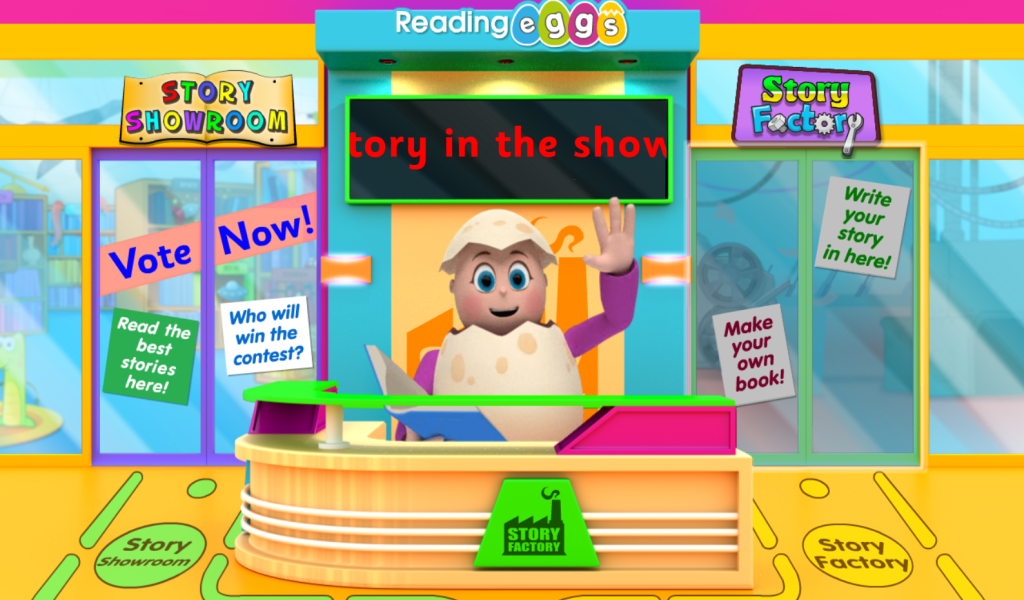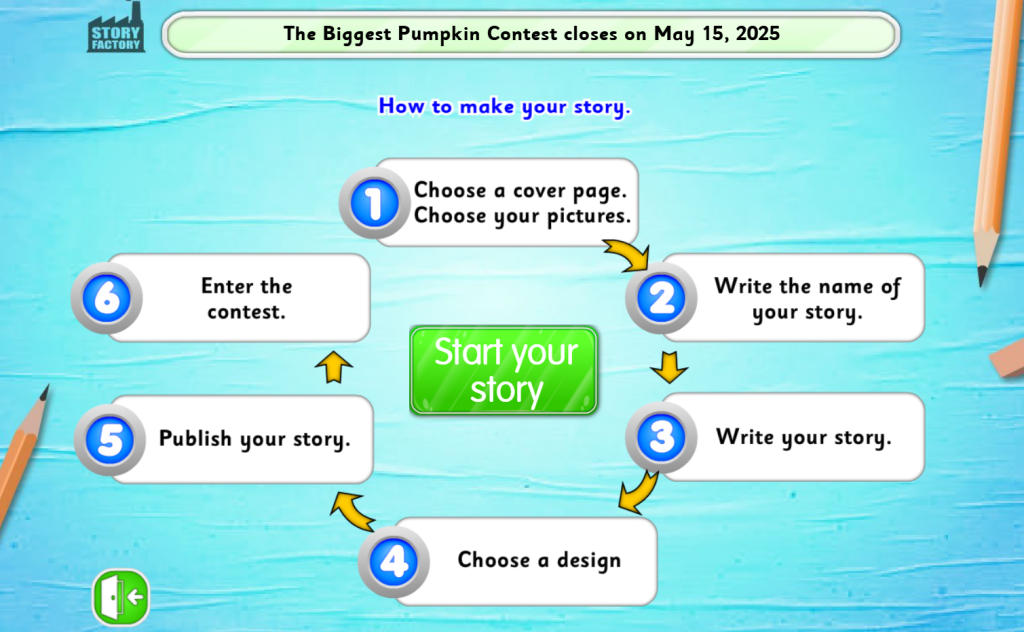
Story Factory: How to Write a Story?
Every child has a story to tell. Whether it’s about dragons and castles, astronauts and aliens or school adventures with friends, children love to use their imagination. But when it comes to putting those ideas into words, many parents ask: “How do I help my child learn how to write a story?”
The good news is that story writing can be fun, easy and rewarding, especially when guided step-by-step. And thanks to digital learning tools like Reading Eggs and Mathseeds, your child can now build strong writing skills right from home. One exciting feature inside Reading Eggs is the “Story Factory.” It is a magical space where children can practise writing their own stories and even get published online!
In this article, we will guide you through the basics of how to write a story, explain why story writing is such an important skill and show how Reading Eggs and its “Story Factory” can help your child fall in love with English story writing.
Why Story Writing Matters?
Story writing is more than just putting words on a page. It helps children:
- Think creatively
- Organise their thoughts
- Build a strong vocabulary
- Improve grammar and punctuation
- Learn how to express ideas clearly
Most importantly, it gives children the confidence to share their own voice. When children learn how to write a story, they learn how to express emotions, develop characters and solve problems.
As a parent, encouraging your child to write a story regularly helps them perform better in English and build a habit of creative thinking.
Book 07 days FREE trial For UKG Maths Worksheet
What Makes a Good Story?
Before diving into the writing process, let’s look at what makes a story work. Most stories, whether they are fairy tales, superhero comics or school dramas, follow a simple structure:
✅ A Beginning: This introduces the characters and setting. Who is the story about? Where is it taking place?
✅ A Middle: This includes a problem or challenge. What goes wrong? What must the characters do?
✅ An Ending: This shows how the problem is solved. Was the mission completed? Did the characters learn something?
Step-by-Step: How to Write a Story
Here’s a simple guide to help your child learn how to write a story:
1. Brainstorm Ideas
Every story starts with an idea. Ask your child:
- What do you want to write about?
- Who will be the main character?
- Where will the story happen?
- What is the problem or adventure?
Encourage them to make a mind map or list. No idea is too silly, sometimes the best stories come from wild imagination!
2. Plan the Story
Once your child has an idea, help them plan the structure:
- Beginning: Introduce the main character and setting.
- Middle: Show what problem or goal the character faces.
- Ending: Describe how everything turns out.
Using a simple three-part template helps your child stay focused and organised.
3. Write the First Draft
Now it’s time to write! Remind your child that the first draft doesn’t have to be perfect. Encourage them to:
- Start with a strong opening line (e.g., “One rainy day, Maya found a talking umbrella…”)
- Use clear sentences
- Add action words and interesting adjectives
- Include dialogue if possible
This is where the real magic happens, when thoughts turn into a real story.
4. Revise and Improve
After the first draft is done, guide your child to read their story again and improve it. Ask:
- Are the sentences clear?
- Do the characters act in a way that makes sense?
- Can you add more detail?
Show them how to correct grammar, spelling and punctuation. You can even read the story aloud together to catch any mistakes.
5. Share the Story
Sharing gives children a sense of pride. Whether it’s reading aloud to the family or publishing it online, telling others about their work helps build confidence.
Reading Eggs and Mathseeds combines all these features in a creative and unique format with its “Story Factory” section.
Book 07 days FREE trial For UKG Maths Worksheet
What is Reading Eggs’ Story Factory?
Reading Eggs and Mathseeds is a popular online platform that helps children build reading and writing skills through fun, interactive lessons. One of its best features is the “Story Factory.”
 Source: Reading Eggs and Mathseeds
Source: Reading Eggs and Mathseeds
Inside the “Story Factory,” children can:
✅ Learn how to write a story through guided prompts
✅ Practice writing every week
✅ Enter writing competitions
✅ Read other children’s stories
✅ Earn golden eggs and rewards for completing stories
✅ Get published online (with your permission)
The “Story Factory” makes story writing enjoyable and stress-free. It gives children structure and motivation to practise regularly.
Whether your child is just starting out with English story writing or already loves to write, the “Story Factory” gives them the right tools and encouragement to grow. Here’s the info snippet that details how a child can write a story in the Reading Eggs and Mathseeds programme:
 Source: Reading Eggs and Mathseeds
Source: Reading Eggs and Mathseeds
Why Parents Love Story Factory?
Parents across India have found “Story Factory” to be a fantastic way to support their child’s writing journey. Here’s why:
✅ Simple and Guided: It shows children exactly what to do, making writing less confusing.
✅ Fun and Interactive: Children earn rewards and badges that keep them motivated.
✅ Builds a Habit: Competitions encourage regular practice.
✅ Safe and Child-Friendly: You control what gets published, and your child’s privacy is protected.
✅ Supports School Learning: Helps children perform better in English writing assignments at school.
Conclusion
Learning how to write a story is one of the most valuable skills your child can develop. It strengthens their imagination, builds confidence and improves their overall communication skills. With Reading Eggs and Mathseeds’ “Story Factory,” writing a story becomes something your child will look forward to, not fear.
So why wait? If you are looking to help your child build strong English story writing skills in a fun and engaging way, give Reading Eggs and Mathseeds a try. Let their imagination take flight, and who knows, your child might just be the next bestselling author in the making!

